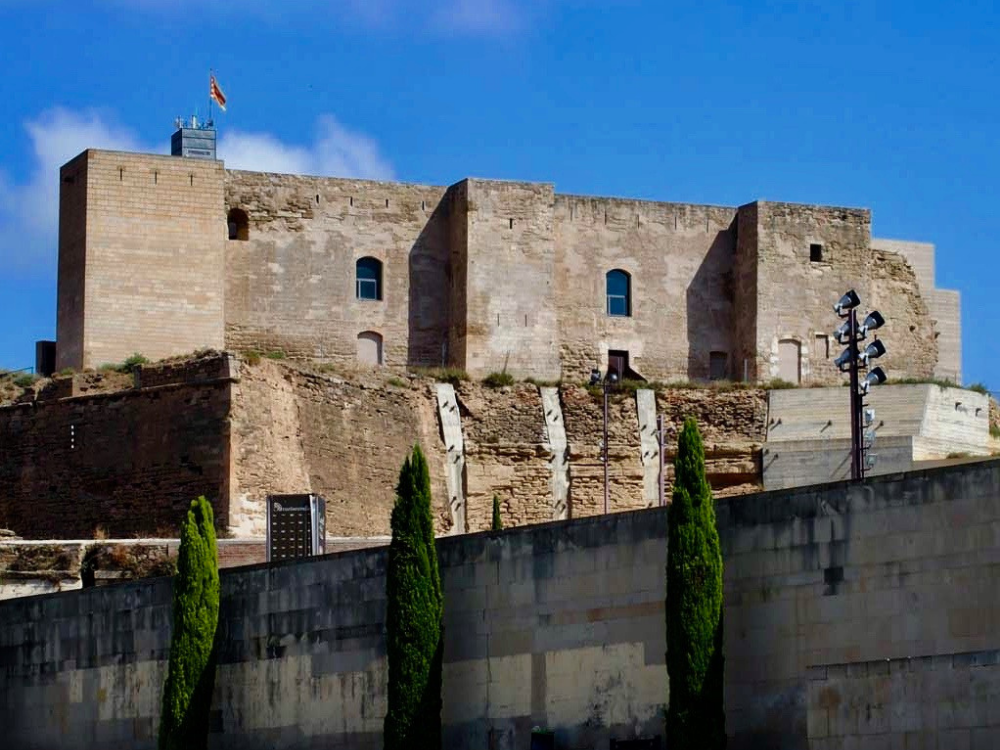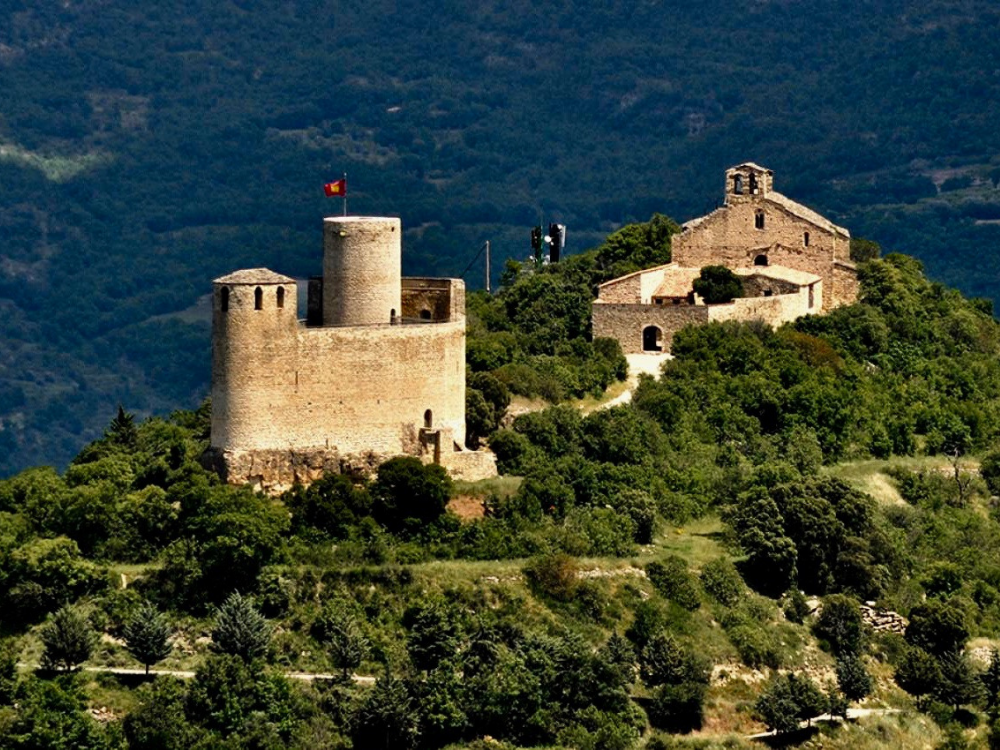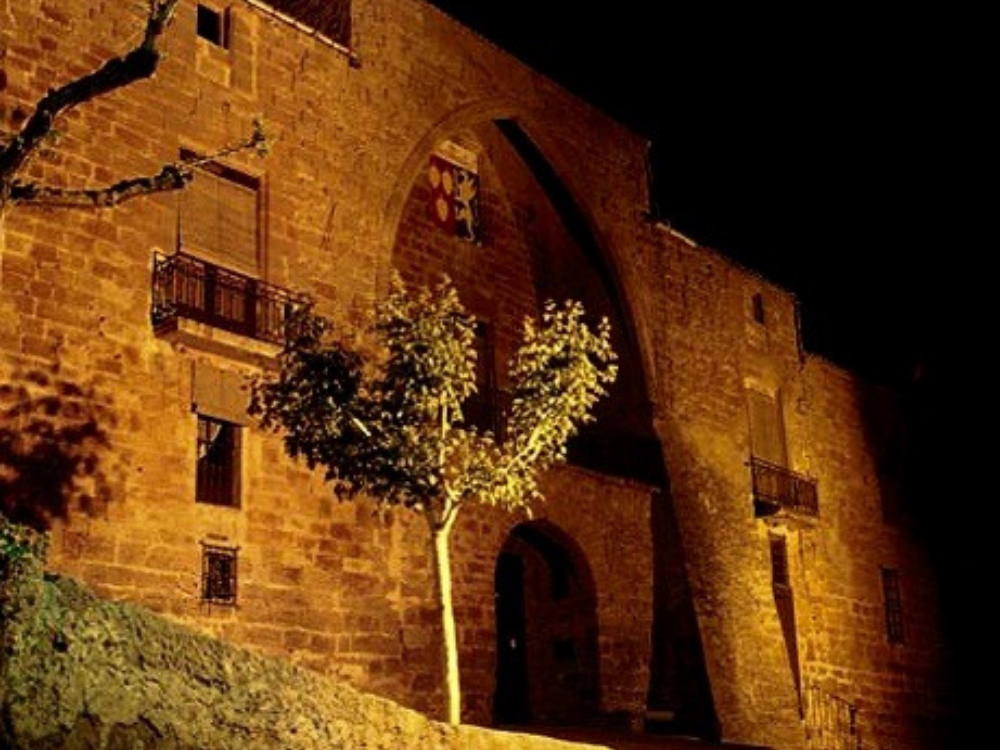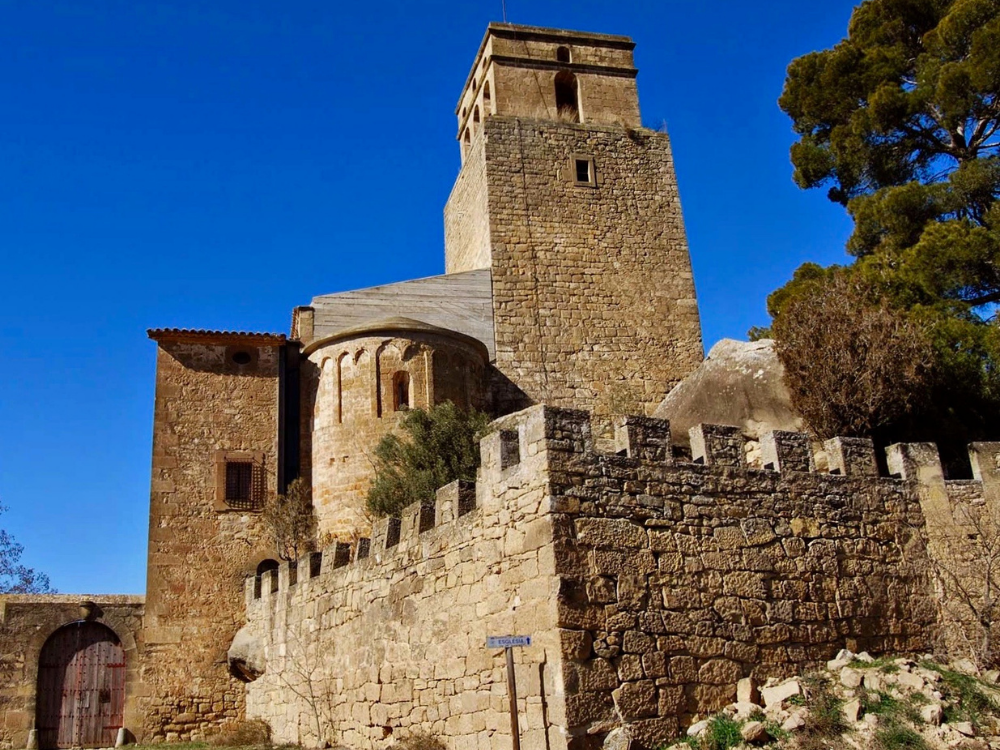Are you thinking of getting to know the history of Lleida in greater depth? To do so, you need to discover its castles. In this article we present the 10 most charming castles in the province of Lleida.
Castell de Gardeny

One of the most famous castles in the province is the Templar castle of Gardeny, on the hill of Gardeny, in the city of Lleida. It was built in the second half of the 12th century by the Order of the Temple, when the Count of Barcelona granted them the land for the help they had given him against the Muslims. This castle is the perfect representation of what Templar architecture was like, and it remains practically intact! There is a church built right next to it, and it is considered a unique building, as it preserves one of the few Templar mural paintings in all of Europe. It is not to be missed!
Castell de Montsonís

One of the best known and most important castles in the province is Montsonís Castle. It was built in 1024 to protect the land from the Muslim conquest. It has therefore been relevant since medieval times, to which it manages to transport all its visitors. The whole castle itself is a monument and worth discovering in depth, but we would like to highlight the keep (we are obliged to boast about the view… you can’t miss it!). The castle still has tenants, so there are some rooms for private use. Yes, you read that right; but that doesn’t stop guided tours (it’s open to the public from Wednesday to Sunday).
Castell del Rei - La Suda

If you visit Lleida, it is essential to go to the Turó de la Seu Vella, where two of the capital’s most important buildings are located: the cathedral, or “Lleida Castle”; and the Castell del Rei – La Suda, built in 882. It was the home of the last caliph of Cordoba and where the Crown of Aragon was born. It is therefore impossible not to remember this castle when we talk about the history of Lleida, Catalonia and even Spain. In the royal hall of the castle is the Centre d’Interpretació de la Suda, a museum space that explains its history through panels and audiovisuals. There is also a viewpoint, which is also the highest point in the city. Learning like this is priceless!
Castell de la Ràpita

This castle, built in 1091 and of Arab origin, is located in Vallfogona de Balaguer, in the region of La Noguera. It cannot currently be visited, as it is the property and home of the Duke of Maqueda. Even so, we dare say that seeing the outside of the castle is more than enough, as you can also see the Romanesque church of Santa Margarita (now the castle chapel). Of what used to be the fortification, the left tower of the façade, the rectangular plan and its walls remain, and from here the medieval castle was built. It may look like a castle like many others, but part of the charm of Lleida lies in it.
Castell de Mur

The castle of Mur, together with the Col-legiata de Santa Maria de Mur, are the symbol of the military and spiritual dominion of lands that were being conquered by the Muslims. Here you already have a reason why you should visit it… now let us amaze you with its beauty. The truth is that the Castle of Mur is very simple architecturally speaking, but at the same time it is a unique work if we look at the civil military architecture of the 11th century. When visiting it, it is very easy to stop time and be transported back centuries, when it was the property of Arnau Mir de Tost. All this is possible thanks to the visits that are made, which allow you to capture the essence of the place.
Castell de les Pallargues

Near the town hall of Les Pallargues, in a very hidden street, is the castle of Les Pallargues. At the time of its construction (1061), the castle was isolated and at the highest point of the village, but in 1636 houses were built around it, so that it ended up being the centre of an urban centre. The appearance it has today is due to the bombardments and military occupation that took place during the civil war. This castle is undoubtedly one of our favourites, as it captures very well the essence of what it was, and is able to transport you to a bygone era. Moreover, visits can be made with a guide, so it is much easier to reconstruct its history.
Castell de Guimerà

If your aim is to discover the best castles in the province of Lleida, the castle of Guimerà is a must on your list: built between the 10th and 11th centuries (during the Christian reconquest), it has been a Cultural Asset of National Interest since 1949. What stands out most is its watchtower, which is perfectly preserved and stands 20 metres high; it afforded ideal views of the whole area. Don’t you believe us? You can see for yourself, because inside there are stairs that allow you to climb up to the viewpoint at the top. The castle was damaged during the First Carlist War (1835); and at the beginning of the 21st century some reconstructions were carried out in order to leave the castle in the state it is now in.
Castell de la Floresta

The Floresta Castle was built at the beginning of the 13th century, and one of its most attractive features is that it houses Romanesque, Gothic and Renaissance elements. You can’t miss it! It has been declared a Cultural Asset of National Interest, and was where the Dukes of Cardona, the Counts of Pallars and the Dukes of Medinaceli stayed during hunting times. The castle is in very good condition, as the town council of La Floresta is always aware of the importance of its restoration. Guided tours are offered to explain how it was built, the context in which it was built and its history, as it was home to important families in Catalonia.
Castell de Ribelles

On a hill near the village of Ribelles is the castle of Ribelles. Its strategic location, its walls, the moat that surrounds it and the height of the keep made it an important castle in La Noguera. It is believed to be a construction from the 8th century and of Islamic origin, although it only appears in documents from the 10th century onwards. It was declared a Cultural Asset of National Interest in 1983, and despite being partially in ruins, it is essential to visit it and be impressed by its history. There is no reason not to visit this castle!
Castell de Preixens

It is believed that this castle was built in the 10th century, during the Andalusian period, like many other castles in the area. However, nowadays it is very difficult to see what it looked like, as what is still standing is the reconstruction that was made during the 16th century, when it changed from a castle to a Renaissance manor house. Thus, the only original Islamic remains are on the north side of the castle. The municipality of Preixens is very rich in cultural heritage, mainly given by the castle, so if you want to discover how people lived during the medieval times, visiting this castle is one of the best options.



